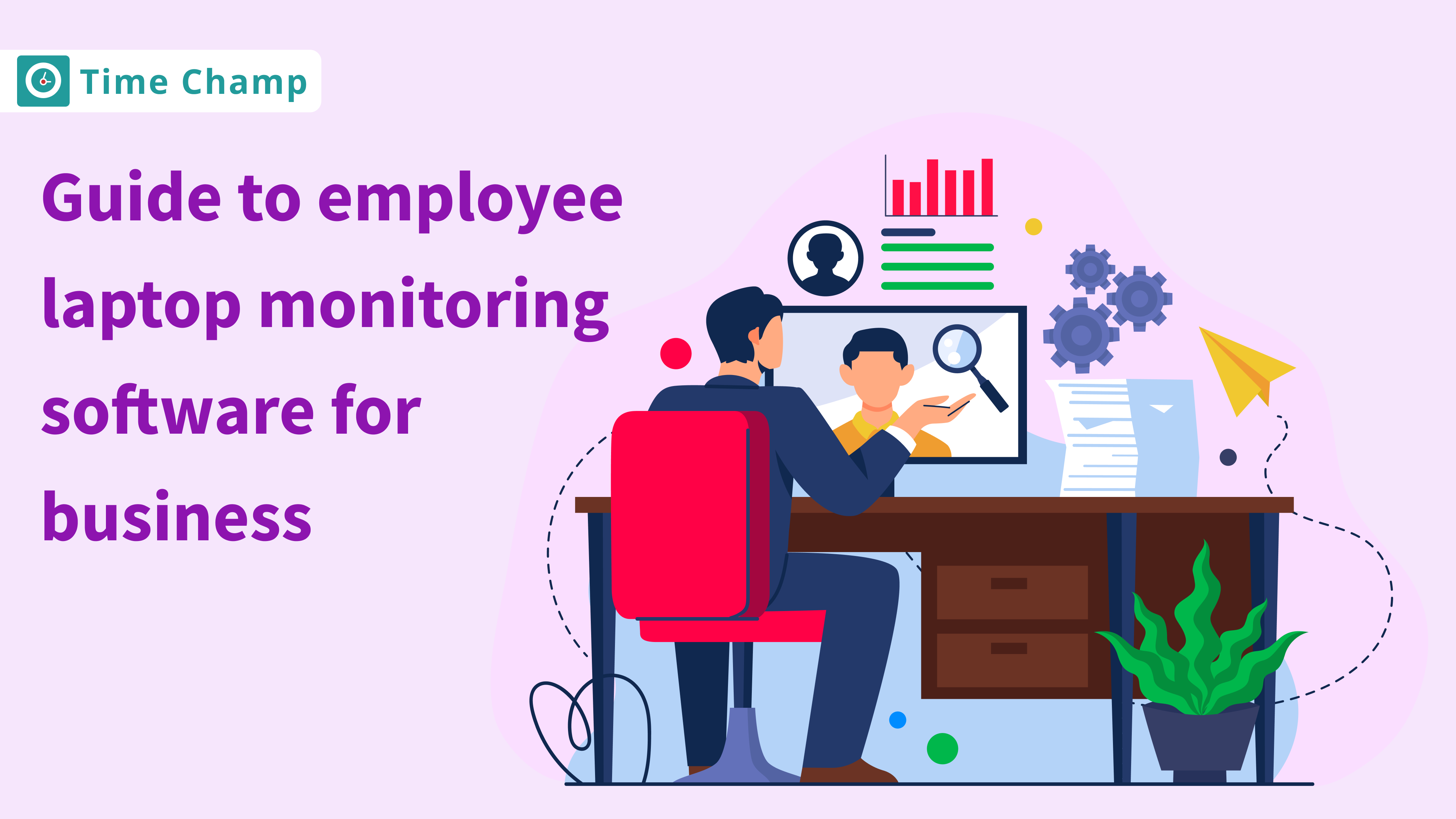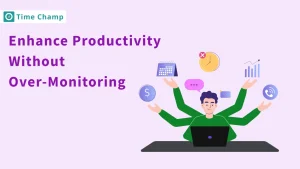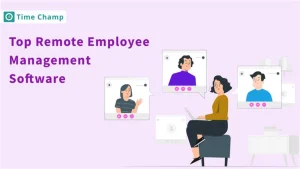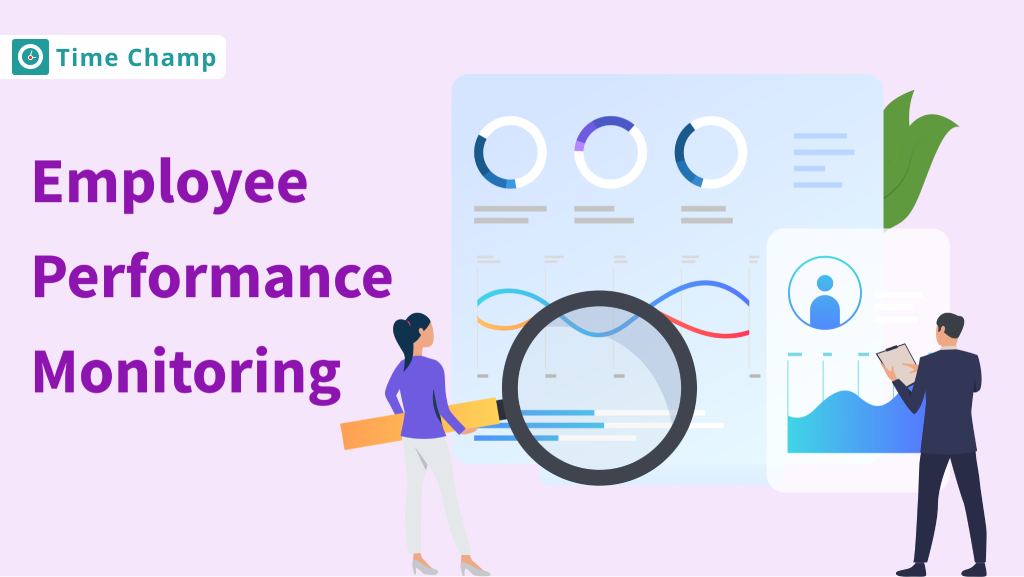Presently, most companies are dependent on technology as a growth driver in their organizations. A vital part of managing a contemporary workforce is the tracking of the employees especially for ones working with the company’s laptop. Laptop Activity Tracker Software has turned into a necessary item, whose importance increases with the growth of remote work opportunities and the vital requirement to secure confidential data.
The performance management software tools also have data protection and compliance roles. This all-inclusive guide will look at laptop activity tracking software, provide details of laptop monitoring, free and paid versions for different operating systems, for example, Windows, Mac, and Linux, and live screen monitoring software and how it can change the way companies operate.
While looking at different ways of monitoring employee laptops, let’s not forget about Time Champ, a versatile software that works great on Windows, Mac, and Linux.
1. The importance of tracking laptop activity in modern workplaces.>
Many enterprises equip their workers with laptops for greater mobility and to work in remote areas. This convenience, however, leads to the other challenge of getting control over these company-issued devices. Laptop activity trackers become an important tool that employers use to monitor, measure, and manage work activities.
Laptop activity tracking software helps businesses to:
- To ensure data privacy and integrity, guard against hacking and unauthorized access.
- Enabling identification and improvement of ineffective processes.
- They should also keep audit trails in line with industry regulations.
- Stop data leakage and prevent intellectual property misappropriation
Assess team project work patterns and resource allocation.
Companies use Laptop activity trackers to achieve a transparent, secure, and productive work culture. Employee privacy should be taken seriously, and most organizations define what is monitored and why it is done through policies that guarantee legitimacy and legality.
2. Free vs. Premium Laptop Monitoring Software.
Concerning laptop monitoring software, many decision-makers ask themselves whether they should choose the free option or pay for a professional version. Certainly, free laptop monitoring software can enable some basic surveillance including tracking time, recording activities taking place as well as some restricted reporting. Smaller businesses or new startups can use them as an entry point to exploit these advantages without having to pay any initial costs.
In contrast, top-notch laptop tracking software is packed with various tools that are meant to address multi-faceted company demands. They could be comprised of advanced analytics, better integration with other enterprise software, more comprehensive reporting facilities, live screen monitoring, keystroke logging for security reasons, as well as specialized customer support that is absent in the free versions.
Further, paid solutions are known to put high standards and resources towards ensuring that the collected data is protected through highly sophisticated systems, which free solutions may sacrifice. Premium services include privacy protections, data encryptions, secure data storage, and strict compliance with regulations such as GDPR and HIPAA.
Ultimately, deciding on free or paid laptop monitoring software depends on your business’s unique requirements, how much you are willing to pay for advanced features and support and your devotion to rigorous security measures.
3. Ethical aspects of laptop spy software and suggested guidelines.
This raises an issue because, “though it is known as monitoring software,” most employees are likely to feel that they are “being spied on”. Such software can only be used without compromising its integrity, if we are open in our communications and ethical in its use. In this regard, let us look at the importance of having clear policies and moral issues associated with employing laptop spyware point
Best practices include:
- The use of monitoring software in an organization should be explained to its employees.
- Develop an environment of mutual trust by giving access to individual data via such tools.
- Using monitoring tools just on corporate-owned devices and only in professional matters.
- Restrict the surveillance to strictly work-related activities and honor personal time and space.
- Obtain consent and allow employees to switch off tracking during break times and non-work hours.
Monitoring software can be used by organizations to optimize operations while at the same time maintaining honesty and employee confidence.
4. Live Monitoring Software–the Tool for Real-time Supervision.
Live monitoring software is at its best when a supervisor needs a piece of immediate information about the team activity. Supervision at such a level is particularly important for time-sensitive environments requiring rapid responses and decisions.
Real-time screen monitoring offers several advantages:
- Managers can assist the members of the group with immediate support and feedback.
- As they occur, it is easier to detect and respond to potential security incidents.
- Employees are made to understand that they are appreciated and acknowledged for their hard work all the time.
- Live data allows productivity analysis changes to be followed in real-time, allowing bottlenecks’ quick recognition.
Live monitoring software can also be useful for training and development. This also allows for live observation of an employee’s screen where a trainer can highlight improvements or point out corrections to ensure that learners retain as much as possible.
With this in mind, Time Champ becomes a useful tool for organizations with its power to capture live data across Windows, Mac, and Linux systems.
Thereafter, we shall move on to a discussion of platform-specific software, company laptop monitoring, and balancing security vs privacy, helping you understand how to monitor your employees comprehensively.
5. Mac and Windows-specific Software.
It is not an easy task to choose the appropriate laptop monitoring software even for the most modern operating systems used in the enterprise. Mac each ecosystem, there are different monitoring software for Mac systems, and Windows platforms, which all your chosen monitoring programs should be compatible with.
To cater to Mac users, Mac employee monitoring software must have compatibility with macOS. For instance, this should consider macOS security features, native user experience, and tracking of Mac-specific activities.
However, windows users, have a broader option of employee monitoring software since it has been widely adopted in business environments. Monitoring software for employee computers running Windows typically includes such elements as activity logs, screenshots made automatically, advanced analysis, etc.
As a result, when exploring options, you should look for features that are in sync with your organization’s workflow such as project tracking, productivity analysis, security alerts, and compliance reporting. Choose options that are cross-compatible so that there can be effective management of teams that work on various platforms under a single system.
6. Linux Employee Compatibility- Monitoring from all Perspectives.
Linux is not as common in the corporate world as Mac or Windows but is popular with many techies and organizations. Finding Time Champ as a Linux-compatible solution is important because most standard employee monitoring software oversees Linux.
The employee laptop monitoring software for Linux should have time tracking, activity monitoring, and maybe access control features. Linux-based software should be mindful of the open-source policy of the platform, which protects users’ privacy and guarantees transparency.
Organizations can make sure that all employees are incorporated in the productivity and security measures by using Linux-compatible employee monitoring software. This environment is open for all, thus making it easy to supervise every part of the workforce.
7. Asset and Data Protection in Company Laptop Monitoring.
IT security and asset management require monitoring of company laptops. Monitoring employee productivity is not the only thing that matters. There is also a need to shield the organization’s sensitive information and property from any danger.
Company laptop monitoring can include:
- Provide software that prevents the installation of unknown malicious programs compromising the security of the device.
- The monitoring of laptop movements and utilization by remote workers to check if they are used as intended so as not to be lost or stolen.
- To spot any possible activity that indicates a breach or a data theft.
- Make sure that devices have the current security patches and anti-virus software to prevent malware and cyber attacks.>
Some employees may consider this monitoring an invasion of privacy, but we should inform them that this is a necessary step taken to protect both the organization and staff from external threats.
8. Using the employee monitoring software to increase productivity.
However, employee monitoring software does not necessarily imply just that it is a management device. In fact, it does contribute greatly towards improving work performance. Companies gain an understanding of how workers spend their time, thus indicating what should be done to improve on the time management and allocation of resources.
Features that can boost productivity include:
- Work pattern analysis for better task distribution and workflow.
- Detecting common distractions and non-productive activities so that managers can provide tailored coaching or assistance.
- Personalizing analytics for employees to manage/optimize their own productivity.
First, teams are empowered with data to collaboratively discuss workflow issues and identify the bottlenecks.
In choosing employee monitor software, ensure that it has productivity-enhancing features while respecting privacy—a balancing act that breeds a healthy work culture.
Conclusion
Using laptop monitoring for purposes of security in the workplace should be aimed at enhancing productivity without betraying the trust of employees. Through the proper devices and approaches, corporations can secure their property, meet regulatory demands, and develop a productive, orderly workplace. Time Champ platforms are flexible and effective in providing solutions within Windows, Mac, and Linux, hence crucial for current organizations.
FAQS on Laptop Monitoring
Employee laptop monitoring software is a tool that allows employers to track, record, and analyze the activities and behaviors of employees on their work laptops to enhance productivity, ensure security, and protect company assets.
Yes, it is generally legal to monitor employee laptop activity, especially on company-owned devices. However, laws differ by region, and it’s essential to comply with local regulations and to be transparent with employees about monitoring policies and practices.







